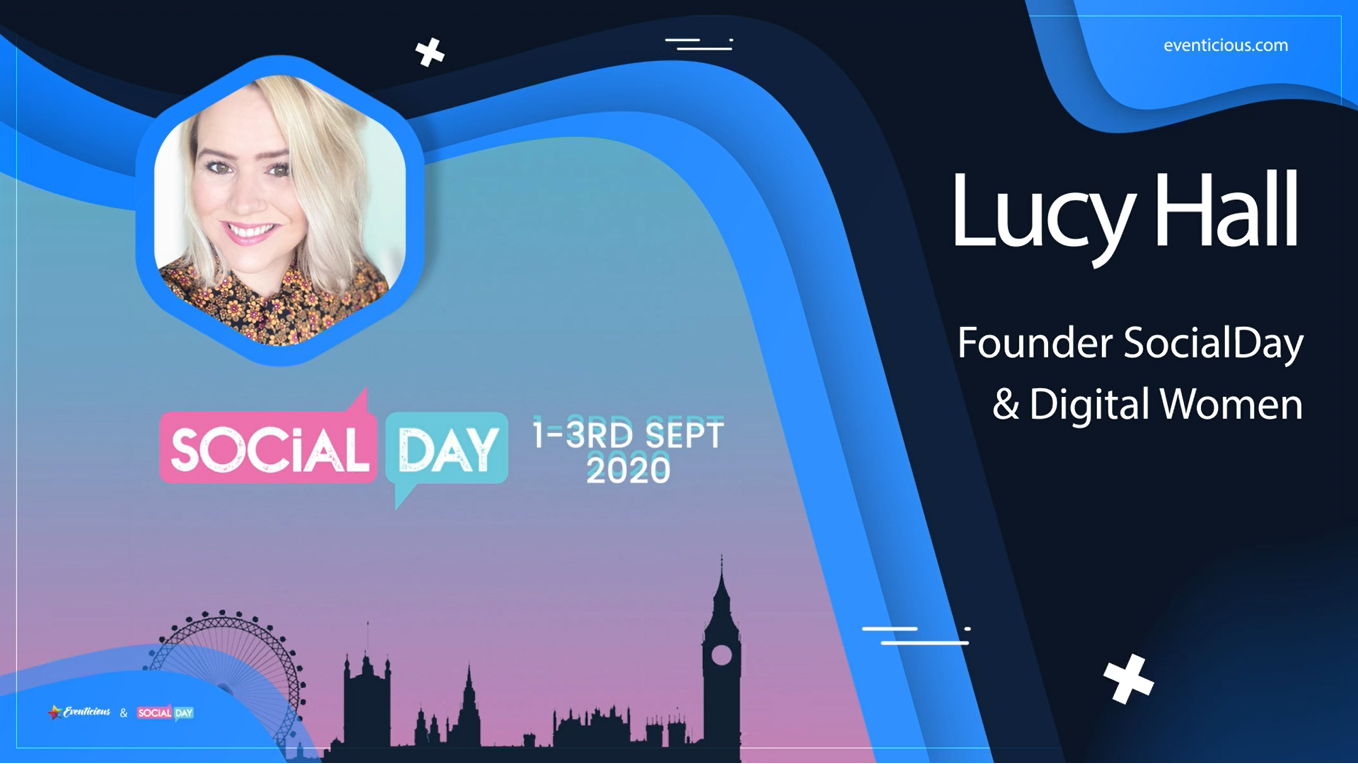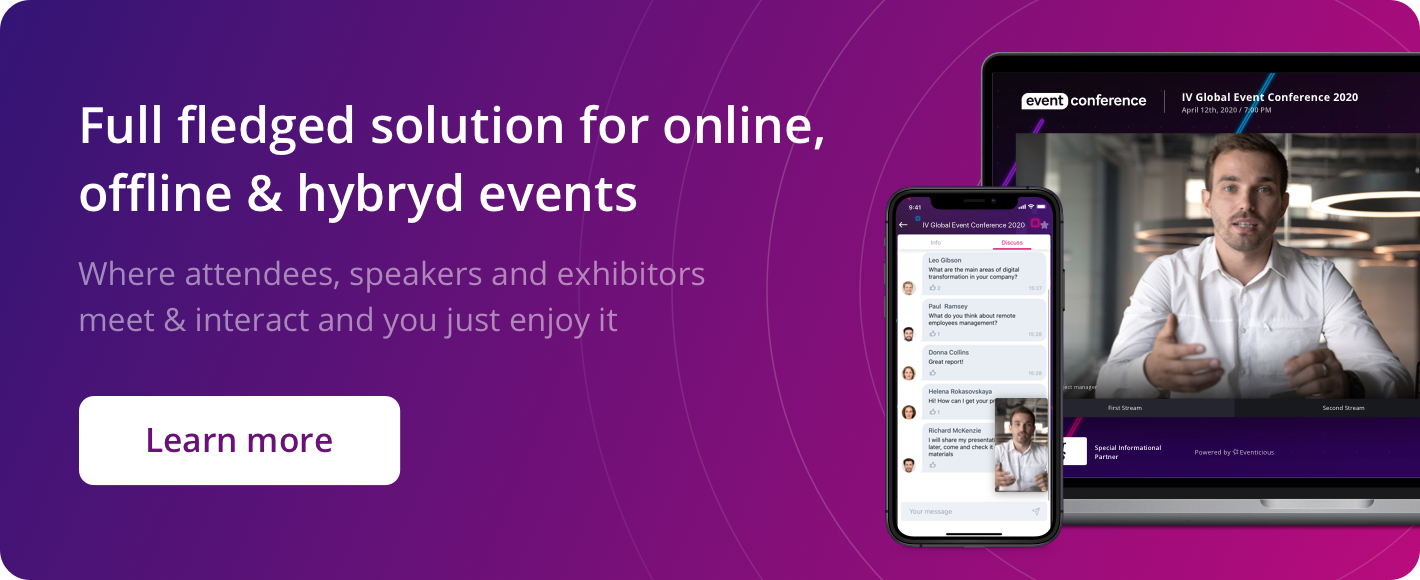Social Day is known as one of the world’s must-attend marketing events. This year, the festival went virtual. It brought together 930 participants from the US and EU, including representatives of mainstream corporations and marketing agencies, marketers and bloggers, to share, learn, communicate, and discuss the latest trends in social media marketing.
Lucy Hall, Founder of Social Day, talked to us about planning virtual events, keeping the virtual audience engaged & building communities around events.
Lucy Hall:
Social Day has been going now for about five years. We started up with around 200 attendees, and for the last couple of years we’ve had about 700 people coming along to our events over the three days.
And this year, obviously, because of the pandemic, we had lost on ticket sales and sponsors and we were thinking ‘Oh no, what are we going to do?’. We couldn’t keep postponing the event, because we didn’t know what was going to happen.
We explored lots and lots of virtual platforms. Some were ok, but there was nothing really good enough for us to say to our speakers, who are really high-profile, and also to our attendees, ‘please come to this event, trust us to come to this event online even though you are probably zoomed out at the moment because everything is online’.
And when we spoke to Eventicious team about using the platform, it seemed like a perfect fit for us, so that we could do it online basically. And it was actually amazing, to be honest, because I didn’t know what I was quite expecting, but the way it ran from start to end was so professional, like a live event. You felt like you were there in person. People could talk to each other and interact with each other over the three days.
Actually, we did not fully utilize the complete power of the Eventicious platform, which I think is absolutely fantastic!
Event app as a way to build a community
We already have been building quite a good community over the years anyway, and I think bringing people that wanted to connect with each other helped as well and, obviously, the app helps.
People were able to talk to each other throughout the event, and we were also able to gamify it. The more attendees engaged, the more points they would get in the app, and kept winning prizes.
And people were sharing, even sharing their lunch inside the app and what they were having and that kind of thing, because it was life. They would show up having lunch on the screen and then start talking to each other. Of course it’s never going to replace the sociable aspect of an in-person event, however, this was a really good way to connect people, due to the circumstances.
And, of course, there were other things we did to build a community, besides the app. One of them - those amazing swag packs that we sent out before the event. And what happened was people were sharing on social media. People were getting fear of missing out, they wanted to come to the event, they wanted these packs, and it was really nice.
I guess the secret is just helping to engage people, asking them questions, asking them to share what they are doing and what they are thinking, and gamifying it a little bit as well. It's important to just keep giving people openings and opportunities to interact with each other. If you just leave attendees to it, sometimes they find it a little bit harder. Whereas if you really keep gently nudging people into talking to each other and then, all of sudden, what happens is that people just start to communicate, and everything kicks off.
And I think what I’d love to do next year (hopefully when we have in-person events again) is to have it like a hybrid event, because you’ll be missing a lot if you do it only offline now.
Keeping the audience after the event
When you have a community inside the app, or a closed space, people feel like they can discuss issues and talk to each other a little bit more openly. Whereas on external social media they are more likely to share stuff with their followers, on Twitter, for example, someone attending an event would be sharing stats and tips and that kind of thing. Inside the app attendees are getting to know each other and they are becoming a community — in this closed space, people feel safe.
Three months after the event we see people still talking inside the app. Because our attendees are already in the app, we just thought it’s worthwhile putting together a content plan so that we can provide updates and regular content and draw people into the community, into this hub, or this club. And people can pay to be inside and get money off the tickets next year -- that’s the thing we are working on at the moment.
It’s our job to stimulate our community, at the end of the day, it’s our job to make sure that people are getting the content they need and then being nudged gently into talking to each other.
We are able to provide regular sessions and share them in the app, regular updates and regular videos and stuff, and then notify all the community members by a push notification within the app: this is happening! Push notifications on your phone are kind of harder to ignore.
So, it’s a great opportunity for sponsors to come on board, because there’s a fantastic and active community around Social Day.



